What is an AI Robot? Comprehensive Definition and Applications
![]()
#AI_Robot (AI Robot) is a combination of two powerful technologies: #Artificial_Intelligence (AI) and #Robotics.
Simply put, an AI robot is a physical machine that, using artificial intelligence algorithms, is capable of performing tasks that typically require human intelligence.
These tasks can include learning, problem-solving, decision-making, pattern recognition, and adapting to the environment.
The applications of AI robots are vast and diverse.
From factory production lines to healthcare services and space exploration, these robots are transforming various industries.
For example, in the #manufacturing industry, AI robots can perform repetitive and dangerous tasks with high precision and speed.
In the #healthcare sector, these robots can assist in precise surgeries, patient rehabilitation, and providing personalized care.
Even in #space_exploration, AI robots can help collect data, conduct experiments, and examine unknown environments.
AI robots, by utilizing sensors and cameras, understand their surroundings and make appropriate decisions using advanced algorithms.
The main goal of developing AI robots is to increase efficiency, reduce costs, improve quality and safety, as well as perform tasks that are difficult or dangerous for humans.
With the continuous advancement of technology, it is expected that we will see a wider presence of AI robots in our daily lives.
For example, chatbots are a type of AI robot that can answer user questions and provide the information they need.
Does your current e-commerce website design not generate the sales you expect?
Rasaweb is an expert in professional e-commerce website design!
✅ An attractive and user-friendly website with the aim of increasing sales
✅ High speed and security for an ideal shopping experience⚡ Get a free consultation for online store design with Rasaweb!
Types of AI Robots Based on Application
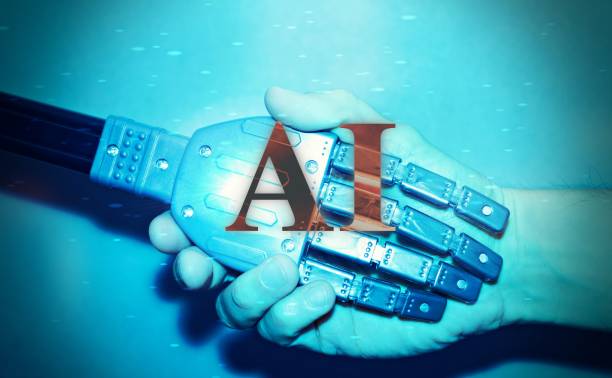
AI robots can be divided into various categories based on different applications.
One of the most common classifications is based on the type of tasks the robot performs.
For example, industrial robots are used for repetitive and heavy tasks in factories.
These robots usually have powerful mechanical arms that can move heavy parts and perform precise tasks at high speed.
Service robots are designed to provide services to humans.
These robots can be employed in hospitals, hotels, restaurants, and other public places.
For example, nurse robots can administer medication to patients, check their vital signs, and answer their questions.
Cleaning robots can clean floors and surfaces and collect dust.
AI robots, with their ability to learn and adapt to the environment, can automatically find their way and avoid obstacles.
Military robots are designed for use in the army and armed forces.
These robots can participate in reconnaissance missions, mine clearance, ammunition transport, and even warfare.
Military robots usually have advanced sensing systems and powerful weapons.
The use of AI robots in the military can help reduce human casualties and increase operational efficiency.
Furthermore, research robots are used for scientific research and data collection in dangerous or inaccessible environments.
These robots can be deployed in deep seas, space, and radioactive contaminated areas.
In summary, the types of AI robots based on application are very diverse and extensive, and every day we witness the emergence of new robots with more advanced capabilities.
Main Components of an AI Robot
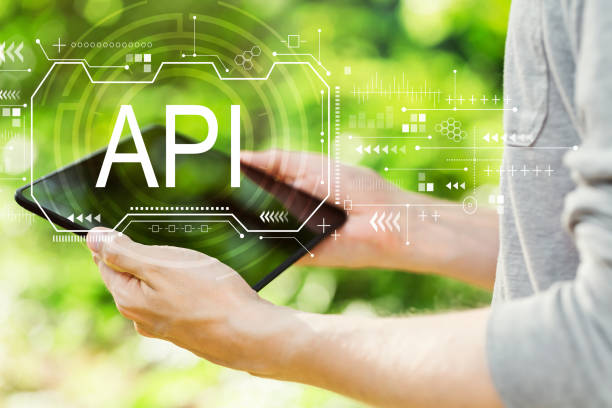
An AI robot consists of several main components that, by collaborating, enable it to perform various tasks.
These components include: #hardware, #software, #sensors, and #actuators.
The robot’s hardware includes the body, processors, memory, and other physical components that enable the robot to move, process information, and interact with the environment.
The robot’s software includes AI algorithms, the operating system, and other programs that instruct the robot on how to operate.
#Artificial_Intelligence_Algorithms allow the robot to learn, reason, make decisions, and interact with its environment.
Sensors enable the robot to collect information about its surroundings.
These sensors can include cameras, microphones, temperature sensors, pressure sensors, and other devices that provide sensory information to the robot.
Actuators allow the robot to interact with its environment.
These actuators can include motors, arms, wheels, and other devices that allow the robot to move, manipulate objects, and interact with the world around it.
The interaction between these components enables the AI robot to perform complex tasks.
For example, an AI robot can detect objects using cameras and machine vision algorithms, and move them using arms and motors.
Additionally, an AI robot can understand voice commands and respond to them using microphones and natural language processing algorithms.
In summary, the main components of an AI robot include hardware, software, sensors, and actuators, which collaborate to enable the performance of various tasks.
AI robot technology is constantly advancing and developing, and with the emergence of new technologies, we expect to see smarter and more powerful robots.
| Component Name | Description | Example |
|---|---|---|
| Hardware | Body, processors, memory | Central Processing Unit (CPU) |
| Software | AI algorithms, operating system | Machine Learning |
| Sensors | Collecting information from the environment | Camera |
| Actuators | Interaction with the environment | Motor |
Advantages of Using AI Robots
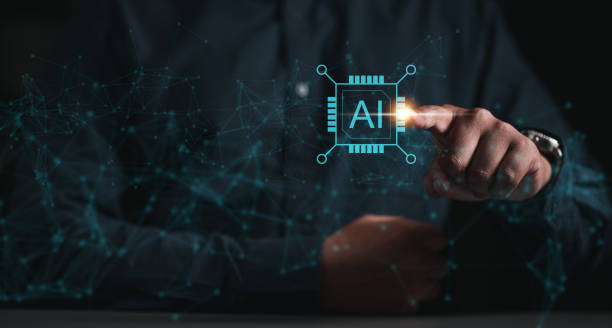
The use of AI robots offers numerous advantages, which can be summarized as follows: #Increased_Productivity, #Cost_Reduction, #Improved_Safety, and #High_Accuracy.
AI robots can perform tasks with much higher speed and accuracy than humans.
This leads to increased productivity and reduced task completion time.
Furthermore, AI robots can work around the clock without needing rest, which also contributes to increased productivity.
The use of AI robots can reduce labor, training, and maintenance costs.
Robots do not require salaries or benefits and can continue their work without fatigue or illness.
Also, robots can perform dangerous tasks without endangering human lives, which leads to a reduction in costs related to accidents and work-related injuries.
AI robots can perform tasks with much higher accuracy than humans.
This is especially important in industries requiring high precision and accuracy, such as medicine and space exploration.
AI robots can accurately collect and analyze information using advanced sensors and complex algorithms, and make correct decisions.
AI robots, with their ability to automate processes, can help reduce human errors and improve the quality of products and services.
Ultimately, the use of AI robots can lead to improved safety in the workplace.
Robots can perform dangerous tasks without endangering human lives, preventing accidents and work-related injuries.
Are you tired of losing business opportunities due to not having a professional corporate website?
Rasaweb, with years of experience in designing professional corporate websites, is your comprehensive solution.
✅ Build a powerful and reliable image for your brand
✅ Convert website visitors into loyal customers
⚡ Get a free consultation now!
Challenges Facing the Development of AI Robots
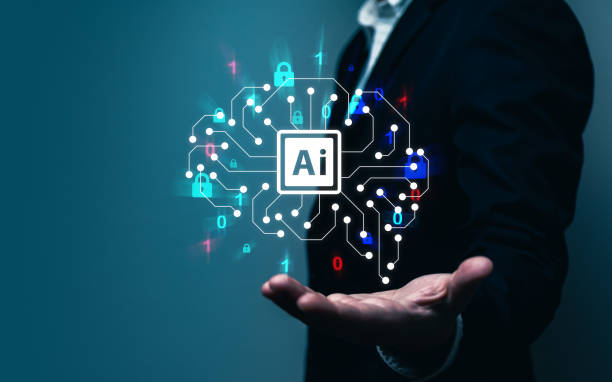
Despite numerous advantages, the development of AI robots faces several challenges.
One of the most significant challenges is the #high_cost_of_development_and_maintenance of these robots.
Developing AI robots requires significant investments in research and development, design and manufacturing, as well as training specialized personnel.
Furthermore, the maintenance and repair of AI robots are costly and require high technical knowledge and expertise.
#Ethical_issues are another significant challenge in the development of AI robots.
With the continuous advancement of technology, the question arises whether AI robots should have rights and responsibilities? Can robots make decisions that affect human lives? How can the misuse of AI robots be prevented? These questions require careful discussion and examination from ethical, legal, and social perspectives.
#Cybersecurity is also a significant challenge in the development of AI robots.
AI robots, especially those connected to the internet, are vulnerable to cyberattacks.
Hackers can infiltrate robot systems, control them, and use them for malicious purposes.
Therefore, ensuring the cybersecurity of AI robots is of paramount importance.
Furthermore, the #shortage_of_skilled_personnel is another challenge facing the development of AI robots.
Developing and maintaining AI robots requires knowledge and expertise in various fields such as robotics, artificial intelligence, programming, and engineering.
Given the nascent nature of this field, the number of skilled professionals in these areas is limited.
AI robot technology, to reach its full potential, requires addressing these challenges and investing in the training and development of specialized personnel.
What Will Be the Future of AI Robots?

The future of AI robots looks very bright and promising.
With the continuous advancement of technology, it is expected that we will see smarter, more powerful, and more versatile robots playing a more prominent role in various aspects of human life.
One significant trend in the future of AI robots is the #greater_integration_of_artificial_intelligence_and_machine_learning_into_robots.
This will enable robots to learn faster and more accurately, adapt to their environment, and make better decisions.
#Collaborative_Robots (Cobots) will also play a significant role in the future of AI robots.
Collaborative robots are robots designed to work alongside humans and can assist humans in performing various tasks.
These robots usually have advanced safety systems that prevent collisions with humans.
Furthermore, #service_robots will also play an important role in our daily lives in the future.
These robots can help us in homes, workplaces, and other public places.
For example, cleaning robots can clean the house, cooking robots can prepare food, and nurse robots can care for the elderly and children.
Furthermore, it is expected that we will see the development of AI robots in new fields such as #medicine, #education, and #space.
AI robots can assist humans in precise surgeries, disease diagnosis, providing personalized education, and space exploration.
In summary, the future of AI robots is very exciting, and we expect to witness major developments in this field.
However, it is also necessary to pay attention to the ethical and security challenges related to AI robots and strive to use this technology responsibly and safely.
AI robots, with their high potential, can help improve the quality of human life and the progress of societies.
AI Robots and Their Impact on the Job Market
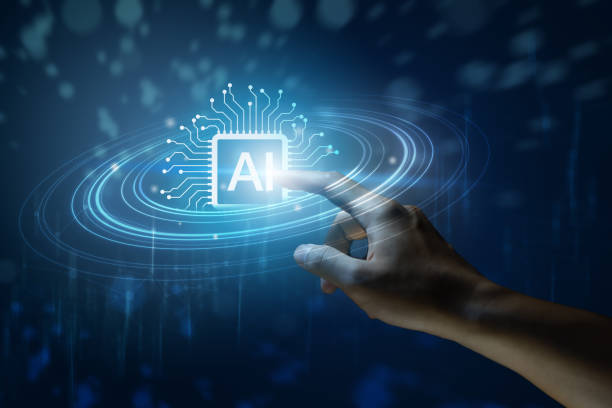
The development of AI robots will have a significant impact on the job market.
On one hand, robots can replace jobs that require repetitive, dangerous, or highly accurate tasks.
This can lead to a #reduction_in_job_opportunities_for_low-skilled_workers.
On the other hand, robots can also create new jobs.
The development, maintenance, and repair of AI robots require specialized personnel in various fields such as robotics, artificial intelligence, programming, and engineering.
This can lead to an #increase_in_job_opportunities_for_skilled_workers.
To address the challenges arising from the impact of AI robots on the job market, it is essential for #policymakers, #employers, and #workers to collaborate.
Policymakers should develop education and training programs so that workers can acquire the necessary skills for new jobs.
Employers should invest in the training and development of their workers’ skills.
Workers should also strive to keep their skills up-to-date and familiarize themselves with new technologies.
AI robot technology, by creating fundamental changes in the job market structure, requires a proactive approach and precise planning to leverage opportunities and mitigate threats.
Furthermore, it is necessary to pay attention to the #social_issues_arising_from_the_impact_of_AI_robots_on_the_job_market.
The reduction of job opportunities for low-skilled workers can lead to an increase in social and economic inequality.
Therefore, it is necessary to adopt policies to support vulnerable workers and reduce social inequality.
In summary, the development of AI robots will have a significant impact on the job market and requires a comprehensive approach and precise planning to address challenges and leverage opportunities.
Ethical Considerations in the Design and Use of AI Robots
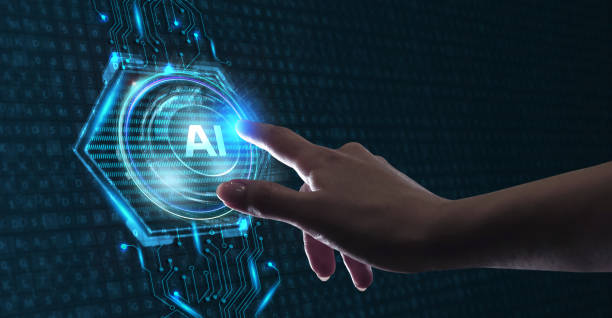
With the widespread use of AI robots, ethical considerations in their design and use are becoming increasingly important.
One of the most important ethical considerations is the #accountability of AI robots.
If an AI robot makes a mistake or causes damage, who will be responsible? Will the designer, manufacturer, owner, or user of the robot be responsible? These questions require careful examination from legal and ethical perspectives.
#Privacy is another important ethical consideration in the use of AI robots.
AI robots can collect a lot of information about humans.
This information can include personal data, financial data, medical data, and other sensitive information.
How can this information be protected and its misuse prevented? These questions require the enactment of strict laws and regulations regarding privacy protection.
#Transparency is also an important ethical principle in the design and use of AI robots.
Humans should know how AI robots work and how they make decisions.
This helps humans to trust robots and use them correctly.
AI robots should be designed so that their operation is explainable and understandable.
Furthermore, it is necessary to pay attention to #discrimination_and_injustice arising from the use of AI robots.
AI robots may be trained on biased data and, consequently, make discriminatory and unjust decisions.
Therefore, in the design and use of AI robots, it is necessary to use diverse and unbiased data and prevent discrimination and injustice.
| Ethical Consideration | Description | Proposed Solutions |
|---|---|---|
| Accountability | Who is responsible for robot errors? | Establishing clear laws and regulations |
| Privacy | Protection of personal information | Enacting strict laws on privacy protection |
| Transparency | Explainability and understandability of robot performance | Designing explainable robots |
| Discrimination and Injustice | Preventing discriminatory decisions | Using diverse and unbiased data |
Does your current website display your brand’s credibility as it should? Or does it drive away potential customers?
Rasaweb, with years of experience in designing professional corporate websites, is your comprehensive solution.
✅ A modern, beautiful, and brand-consistent website
✅ Significant increase in lead generation and new customers
⚡ Contact Rasaweb now for a free corporate website design consultation!
AI Robots in Iran: Opportunities and Challenges
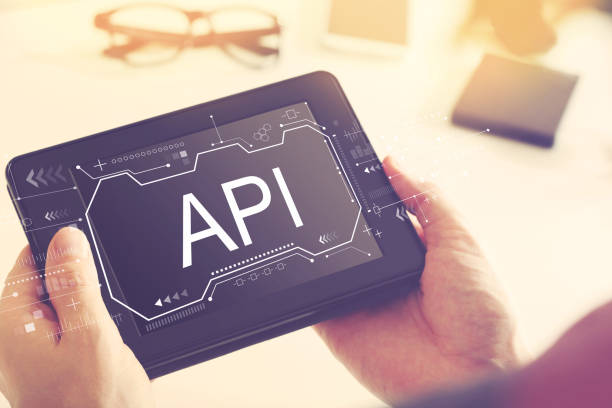
The development of AI robots in Iran has its own unique opportunities and challenges.
Iran, with its young and educated workforce, has high potential for developing this technology.
Furthermore, the existence of various industries such as oil and gas, automotive, and steel provides numerous opportunities for using AI robots to increase productivity and reduce costs.
However, the development of AI robots in Iran also faces numerous challenges.
One of the most significant challenges is the #lack_of_investment_in_research_and_development.
Developing AI robots requires significant investments in research and development, design and manufacturing, as well as training specialized personnel.
The government and private sector must make the necessary investments in this area.
#Economic_sanctions are another significant challenge in the development of AI robots in Iran.
Sanctions have limited access to advanced technologies and raw materials required for robot manufacturing.
Furthermore, #weak_information_technology_infrastructure and a #shortage_of_skilled_personnel are other challenges facing the development of AI robots in Iran.
To overcome these challenges, the government and the private sector must collaborate and implement comprehensive programs for developing information technology infrastructure, training specialized personnel, and attracting foreign investment.
AI robot technology in Iran, despite the challenges, can play a significant role in the country’s economic and social development.
With precise planning and appropriate investment, this technology can be used to increase productivity, reduce costs, improve quality of life, and create new job opportunities.
Career and Educational Future Related to AI Robots
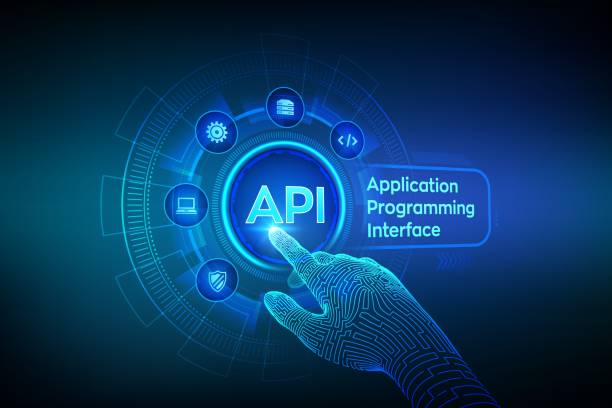
Given the rapid growth of AI robots, the career and educational future related to this field is very bright and prosperous.
Individuals who have studied in fields such as robotics, artificial intelligence, programming, electrical engineering, and mechanical engineering will have many job opportunities.
#Robotics_engineers are responsible for the design, construction, testing, and maintenance of AI robots.
#AI_specialists develop algorithms and machine learning models so that robots can learn, reason, and make decisions.
#Programmers write code that instructs robots on how to operate.
#Electrical_engineers design and implement the electrical and electronic systems of robots.
#Mechanical_engineers design and build the mechanical systems of robots.
Furthermore, new professions are emerging that are directly related to AI robots.
#Robotics_ethics_specialists are responsible for examining and resolving ethical issues related to AI robots.
#Robotics_safety_specialists are responsible for ensuring robot safety and preventing accidents.
#Human-robot_interaction_specialists are responsible for designing appropriate user interfaces for human interaction with robots.
To succeed in professions related to AI robots, individuals need to possess #strong_technical_skills, #problem-solving_skills, and #creativity.
Also, #continuous_learning_ability and #familiarity_with_the_latest_developments_in_AI_robotics are very important.
Universities and educational institutions should keep their curricula updated and offer courses in robotics, artificial intelligence, and other related fields.
Students should also utilize available opportunities to acquire the necessary knowledge and skills and prepare themselves for entering the job market.
AI robots, by bringing about fundamental transformations in various industries, require specialized and skilled human resources and provide numerous career and educational opportunities for interested individuals.
Frequently Asked Questions
| Row | Question | Answer |
|---|---|---|
| 1 | What is an AI robot? | An AI robot is a machine capable of understanding, reasoning, learning, and problem-solving, and can perform complex tasks with relative autonomy. |
| 2 | What are the most important applications of AI robots? | Main applications include industrial manufacturing, customer services (chatbots), medicine and surgery, autonomous transportation, space exploration, and military affairs. |
| 3 | What is the main difference between an AI robot and a regular robot? | A regular robot only follows programmed instructions, whereas an AI robot can learn from data, make decisions, and adapt itself to new environments. |
| 4 | How do AI robots learn? | They learn by identifying patterns through machine learning algorithms (such as deep learning, reinforcement learning) and processing vast amounts of data, thereby improving their performance. |
| 5 | Can AI robots have emotions? | Currently, AI robots do not possess real human-like emotions. They can mimic or detect emotions, but they do not understand or experience them. |
| 6 | What are the current limitations of AI robots? | Limitations include the need for large amounts of data, inability to understand abstract concepts, lack of true creativity, ethical issues, and challenges in generalization to new environments. |
| 7 | What is the role of AI in the development of humanoid robots? | AI helps humanoid robots to walk, maintain balance, perceive their surroundings, interact with humans, and perform complex tasks. |
| 8 | How is the future of AI robots predicted? | It is predicted that AI robots will become smarter, more autonomous, and capable of performing more complex tasks in daily life and industry, and their interaction with humans will increase. |
| 9 | Can AI robots replace all human jobs? | It is unlikely that all human jobs will be replaced. Robots will take over many repetitive and dangerous tasks, but jobs requiring creativity, empathy, and ethical judgment will remain. |
| 10 | What ethical and social challenges arise with the expansion of AI robots? | Challenges include issues related to privacy, data security, ethical decision-making by robots, impact on employment, and accountability in case of errors. |
And other advertising services from Rasaweb Advertising Agency
- Smart Custom Software: A creative platform for improving digital branding with attractive UI design.
- Smart Link Building: Professional optimization for campaign management using attractive UI design.
- Smart Data Analysis: Professional optimization for improving SEO ranking using key page optimization.
- Smart Content Strategy: Designed for businesses seeking online growth through attractive UI design.
- Smart Sales Automation: A professional solution for digital branding with a focus on smart data analysis.
And hundreds of other services in internet advertising, advertising consultation, and organizational solutions
Internet Advertising | Advertising Strategy | Advertorial
Resources
Smart Robots: The Near FutureComprehensive Guide to Artificial Intelligence and Its ApplicationsApplications of Robotics in Industry and LifeChallenges and Opportunities of AI Robots
? Do you want your business to shine in the digital world and reach the peak of visibility? Rasaweb Afarin, a leading digital marketing agency, specializing in providing comprehensive and results-oriented solutions, including SEO-optimized website design, helps you to have a powerful and impactful online presence. With us, your digital goals are not just a dream; they are tangible realities.
📍 Tehran, Mirdamad Street, next to Bank Markazi, Southern Kazeroon Alley, Ramin Alley, No. 6


